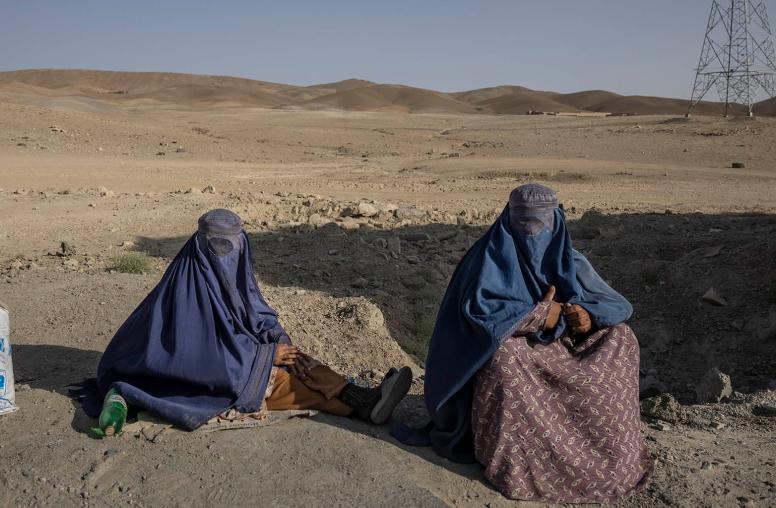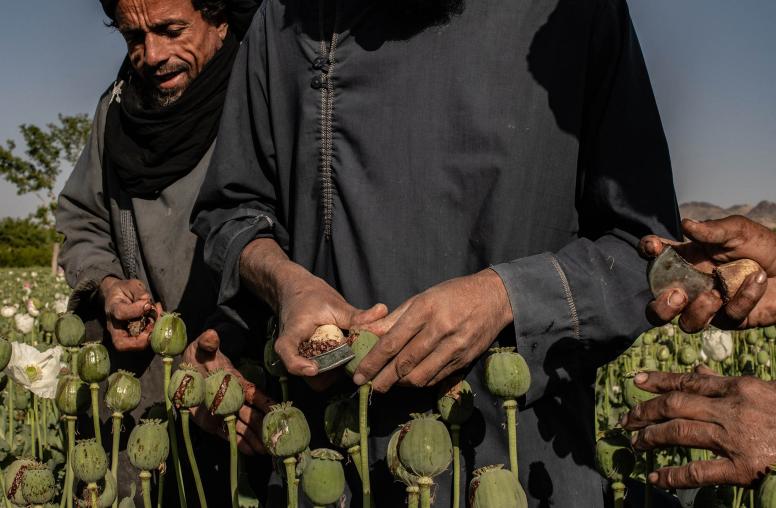How to Stop Extremism Before It Starts
Endemic corruption is padding the ranks of militant fundamentalist groups. Here's how communities are fighting back.

In the global fight against violent extremism, a major element has been missing from the conversation that has focused on mostly top-down, official efforts: how ordinary citizens and communities are successfully challenging the acute corruption that drives young people and others into the folds of radicals.
Imagine growing up in a country where poverty is the norm, officials at every level demand a constant stream of bribes, the government is abusive and greedy and/or tied to organized crime, and rule of law leaves ordinary citizens in the dust while coddling cronies and those who can pay the price. No wonder young citizens rush into the ranks of extremist groups like the self-styled “Islamic State” in the Middle East, Boko Haram in Africa, or the marabuntas gangs in Central America.
Yet, in some of the world’s most repressive places, millions of people have become protagonists of successful nonviolent campaigns that challenge corruption and impunity, improve accountability, and promote political, economic, and social change. A new qualitative study by one of the authors documents 16 such cases in Afghanistan, Bangladesh, Bosnia-Herzegovina, Brazil, Egypt, India, Indonesia, Italy, Kenya, Mexico, Philippines, Russia, South Korea, Turkey, and Uganda.
The link between corruption and violent extremism is starting to make its way into policy conversations and the popular consciousness, thanks to groundbreaking research such as work conducted by Sarah Chayes and by Louise Shelley. Chayes just published the book Thieves of State: Why Corruption Threatens Global Security, prompting an appearance on Comedy Central’s The Daily Show with Jon Stewart. Shelley outlines the connections between these scourges in her book Dirty Entanglements: Corruption, Crime, and Terrorism. In February, a Transparency International-U.K. report on the international community’s mission in Afghanistan concluded that anti-corruption and integrity-building measures must be included in future security, peacebuilding, and reconstruction efforts.
Grassroots efforts already are doing their part. They wield creative nonviolent tactics like civil disobedience, monitoring initiatives, petition drives, low-risk mass actions, digital dissent, street theater, reverse boycotts, youth clubs, and campaigns to refuse cooperation with bribery. The impact has disrupted venal practices, spurred political will, and provided a way out for those caught in systems of corruption. The pressure from below also has strengthened the position of office holders who are pursuing reform in the face of obstacles and intimidation from vested interests.
What does this look like on the ground? Operating in a context of pitched violent extremism, Integrity Watch Afghanistan developed a community-monitoring framework that — through listening, training, access to information, and the creation of Provincial Monitoring Boards — has empowered villagers to systematically scrutinize internationally and domestically funded projects and pressure implementers and officials, with the aim of curbing corruption and improving reconstruction and development. By the end of 2014, civic groups monitored approximately 900 projects in seven provinces. A study of the first 400 initiatives found that, in two-thirds of the cases, either problems were uncovered and rectified as a result of community pressure, none were found, or those responsible for the projects being monitored cooperated from the outset.
In Kenya, Muslims for Human Rights (MUHURI) has empowered slum communities in Mombasa to conduct social audits of development funds and projects, consisting of six steps from information gathering and capacity building to inspections and public hearings, in order to fight poverty and curb misuse of these resources. Within three years, comprehensive citizen-led initiatives were implemented in 10 areas, uncovering corruption and leading to concrete solutions carried out by the authorities. MUHURI activists had learned about grassroots strategies and tactics from veterans of the Right to Information Movement in India, which led to the passing of one of the best and most user-friendly Right to Information laws in the world.
Civic initiatives targeting corruption and impunity also can help build a culture of democracy and accountability in countries wrestling with transitions from authoritarian rule. Citizens experience democratic practices firsthand through tactics such as informal elections, surveys, reporting to other community members, and public forums with public or private figures in power. A publication of the International Budget Partnership referred to MUHURI’s social audits as “exercises in participatory democracy that challenge the traditional ‘rules of the game’ in governance.”
These results echo findings from the historical record of people power over the past 110 years. Not only have nonviolent resistance campaigns dramatically outperformed their violent counterparts in challenging authoritarian and autocratic regimes, where corruption is systemic and institutionalized, citizen movements also have contributed to democratic consolidation. Even in Syria and Iraq, the coalition building, mobilization skills, and local self-organization that drive people-power movements have also helped local communities both challenge and remain resilient against the so-called “Islamic State” militants.
External Support Options
Although people-power efforts targeting corruption and impunity are homegrown phenomena, the international community can support their efforts.
Doing so, however, requires a movement mindset. This means that governments and other international aid providers need to look beyond formal non-governmental organizations, and engage with civil society groups and other non-state players close to the grassroots, as well as informal civic groups and social movements. It also means providing modest funding for pilot efforts in anti-corruption civic mobilization, helping translate materials on strategic nonviolent action into local languages, and supporting opportunities for peers to learn from each other.
This support should go beyond financial backing, though, to include legal and technical assistance, as well as information not readily available to civic activists, such as information about how foreign aid and domestic revenues are being allocated. Such aid can be coordinated to help amplify voices of local anti-corruption and integrity leaders through support of their digital communication and information outlets.
Efforts to help local actors must also involve concerted action to counter growing global crackdowns against civil society around the world. This requires helping create new tools and platforms to help besieged activists connect with each other and the outside world. Support for regional civil society innovation “hubs” by the U.S. Agency for International Development (USAID), the Swedish International Development Agency (Sida), and other donors as part of President Obama’s Stand with Civil Society Initiative is a step in the right direction. Perhaps most importantly, the international community must respect the wishes and judgments of those on the ground, as international attention is not always wanted or helpful.
It is clear that terrorism, violent insurgencies, and organized crime cannot be tackled unless policymakers understand the inextricable links to corruption. Citizen-led nonviolent campaigns and movements complement top-down measures and can add an essential component to the anti-corruption equation.
In stark contrast to violent coercion, people power confronts injustice and oppression constructively while engaging with both those in power and the public. And it can proactively address a critical driver of violent extremism around the world.
Reposted with permission from ForeignPolicy.com, Source: “How to Stop Extremism Before It Starts"



